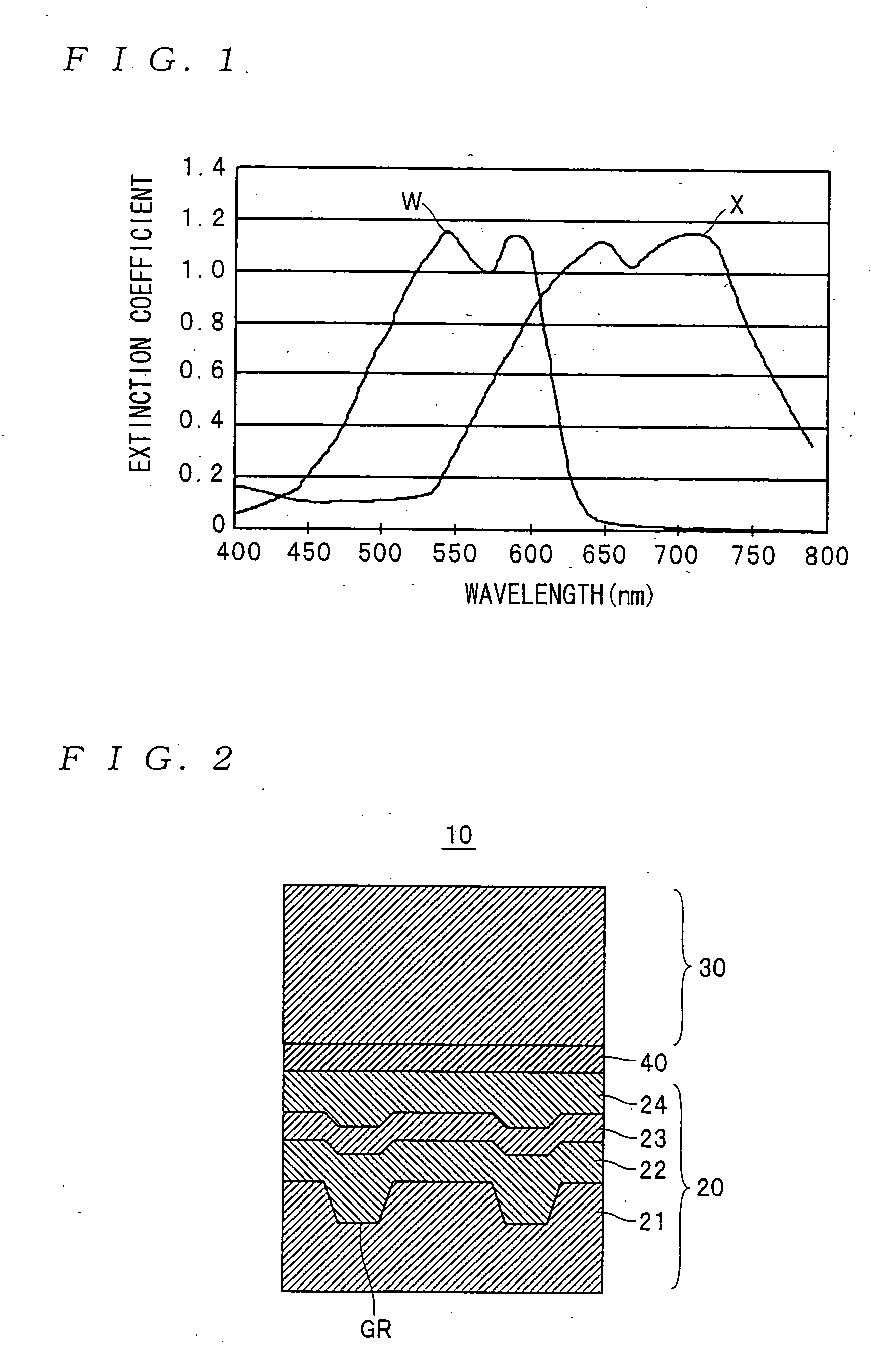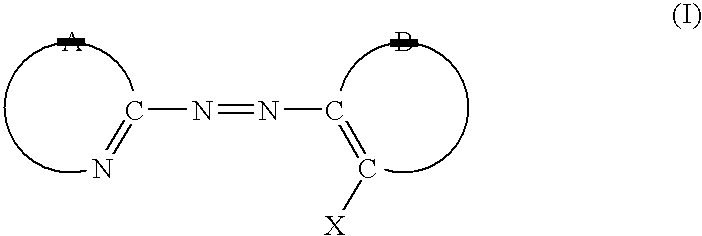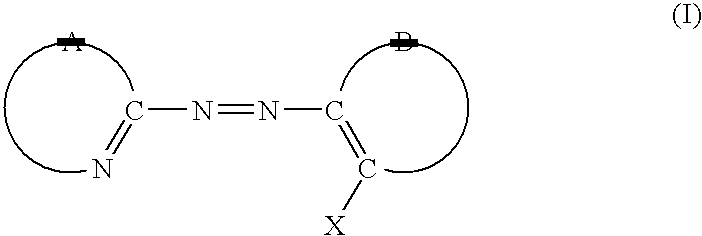Optical recording medium
a recording medium and optical recording technology, applied in the field of optical recording mediums, can solve the problems of limiting the output of a recording laser, the linear velocity of 10 m/s or above, and the insufficient sensitiveness of the recording layer, and achieves excellent light stability and favorable reflectance
- Summary
- Abstract
- Description
- Claims
- Application Information
AI Technical Summary
Benefits of technology
Problems solved by technology
Method used
Image
Examples
embodiments
[0030] The following describes the present invention in detail with reference to several representative embodiments.
[0031] First the fundamental construction of the optical recording medium used in these embodiments will be described with reference to FIG. 2. The optical recording medium 10 is an optical recording medium that conforms to DVD-R Standard, and is constructed of a disc 20 that is recordable and a disc 30 (dummy substrate) that are bonded together by an adhesive 40. In this case, the disc 20 is composed of a substrate 21 in which grooves GR are formed (this substrate is normally formed of polycarbonate resin and is around 0.6 mm thick), and a recording layer 22, a reflective layer 23, and a protective layer 24 that are provided in order one on top of the other on top of the substrate 21. The disc 30 is composed of the same material as the substrate 21, for example. The adhesive 40 can be freely selected from materials such as a UV-hardening resin or a thermal-hardening ...
first embodiment
[0061] The metal azo dye shown by formula (VI) below was mixed with the pentamethine cyanine dye (with an extinction coefficient of 1.29 at a recording wavelength of 660 nm) shown by formula (III) above at a ratio by weight of 98:2 and after this the recording layer 22 was formed by application according to a spin-coating method and then drying. Also, an Ag reflective layer was formed by a sputtering method as the reflective layer 23. After this, the protective layer 24 was formed using the UV-hardening acrylic resin “DAICURE CLEAR SD318” (made by DAINIPPON INK AND CHEMICALS, INCORPORATED) as the material. The delayed-curing cation polymer adhesive “SK7000” (made by SONY CHEMICAL CORPORATION) was used as the adhesive 40.
second embodiment
[0062] The metal azo dye shown by formula (VI) above was mixed with the trimethine cyanine dye (with an extinction coefficient of 0.815 at a recording wavelength of 660 nm) shown by formula (IV) above at a ratio by weight of 97:3 and an optical recording medium was manufactured in the same way as the first embodiment.
PUM
| Property | Measurement | Unit |
|---|---|---|
| maximum absorption wavelength | aaaaa | aaaaa |
| absorption wavelength | aaaaa | aaaaa |
| wavelength | aaaaa | aaaaa |
Abstract
Description
Claims
Application Information
 Login to View More
Login to View More - R&D
- Intellectual Property
- Life Sciences
- Materials
- Tech Scout
- Unparalleled Data Quality
- Higher Quality Content
- 60% Fewer Hallucinations
Browse by: Latest US Patents, China's latest patents, Technical Efficacy Thesaurus, Application Domain, Technology Topic, Popular Technical Reports.
© 2025 PatSnap. All rights reserved.Legal|Privacy policy|Modern Slavery Act Transparency Statement|Sitemap|About US| Contact US: help@patsnap.com



